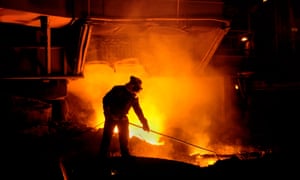The world’s largest steel producer is planning to spend €87m to use a microbe originally found in a rabbit’s gut to turn a waste gas that contributes to global warming into fuel.
Bioengineering company LanzaTech’s technology will be installed at ArcelorMittal’s steel mill in Ghent, Belgium, with the customised Clostridium microbe capturing carbon monoxide and converting it into ethanol.
It is anticipated that the Ghent plant will eventually produce 47,000 tonnes of ethanol a year, which can be sold as a byproduct of the steel-making process and used to run cars and aeroplanes.
Although carbon monoxide is not considered a direct greenhouse gas, it can lead to greater ozone concentrations in the the lowest layer of the atmosphere, contributing to climate change. In a steel plant it is burned, releasing CO2, the main manmade greenhouse gas.
“What we are talking about is turning an environmental liability into a financial opportunity,” said Jennifer Holmgren, chief executive of LanzaTech, which is based in Chicago.
Factories using LanzaTech’s technology are also being built in China and Taiwan. Whichever comes online earliest will be a world first although the system to be built at the factory in Ghent is about 30 times larger than the one in China.
Construction of ArcelorMittal’s pilot should start later this year with bioethanol production beginning in 2017. If the commercial viability of the project is proven the technology would be rolled out across the company’s mills globally: it has factories in 19 countries and produced 93.1m tonnes of steel in 2014.
“This partnership is an example of how we are looking at all potential opportunities to reduce CO2 emissions and support a transition to a lower carbon economy,” said Carl Mare, ArcelorMittal’s vice president of innovation.
“Steel is produced through a chemical process that results in high levels of waste gases being emitted. This new technology will enable us to convert some of these waste gases into fuels that deliver significant environmental impacts.”
Holmgren said: “Today’s announcement is a very big deal for us as ArcelorMittal is the biggest steel producer in the world: it makes twice as much as its nearest competitor. So this is a serious commitment to a future in which more and more power comes from renewables.”

